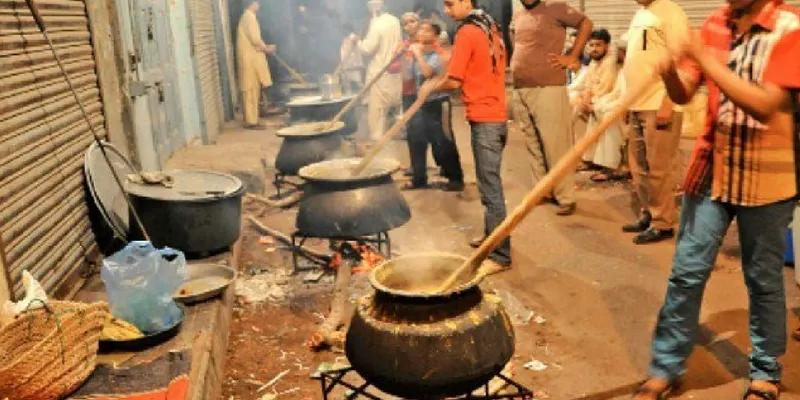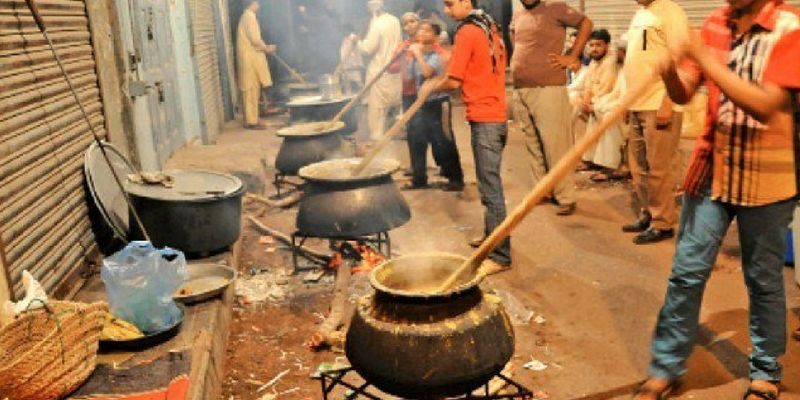How Hyderabad's pot of haleem is breaking global barriers
During Ramadan, even Hyderabad’s signature biryani takes a backseat in favour of haleem, a porridge-like dish made of wheat, lentils, and meat. Haleem becomes so popular during the holy month of Ramadan that not even world-famous delicacies come close in terms of demand and sales. During Ramadan last year, the sale of haleem fetched over Rs 500 crore.

Haleem is available in hotels throughout the year and is also on the menu at most Muslim weddings. However, according to IANS, it is during the month of Ramadan that the demand really spikes.
'Bhattis' or brick-and-mud ovens become a common sight outside hotels across the city during Ramadan, as per IANS. Chefs become engrossed in the laborious process of making the sumptuous dish in large vessels cemented on the traditional ovens. They can be witnessed pounding the meat in vessels with large wooden plates. The entire process takes 10 to 12 hours and is done on firewood.
Originally an Arabic dish, haleem came to India via Iran and Afghanistan. The roots of this dish can be traced back to the 6th-century Persian king Khusrow, through a highly acclaimed cookbook The Legendary Cuisine of Persia. It was first prepared as a dish known as ‘harees’ or ‘harissa’ in Arab countries, for the Nizam of Hyderabad in 1930, by a chef from Yemen.
The syrupy dish was then Indianised over the decades by adding local spices, dry fruit, clarified butter or ‘desi ghee’.
Haleem is the most preferred dish to break the fast with because of its high nutritional value and soothing porridge-like texture. This extensive preparation begins early in the morning. After meat mixed with chillis, garlic, and ginger is tenderised by cooking, wheat is added, followed by lentils, spices like cardamom and cumin, cashew nuts, almonds, cooking oil, desi ghee, and other ingredients.
As the ‘iftar’ time approaches, workers begin to pack or serve hot haleem that is garnished with special spicy ‘shorba’ or mean broth, caramelised onions, coriander, and slices of lemon. Although haleem was earlier made only with beef, there are other variants that exist now—fish, chicken, and even vegetarian.
The various hotels in the city claim to cook haleem with their own unique taste, whether it is an old hotel like Madina in the old city or the new Sarvi and Paradise. However, Pista House, a bakery that opened in the mid-'90s, is credited by the residents of Hyderabad for reviving the dish’s popularity. They became the biggest makers of haleem in the city, with their intense, aggressive, and innovative marketing. They have also gone global since then, having opened their outlets in Oman, Dubai, and the United Sates.
As per IANS, in 2010, haleem succeeded in getting Geographical Indication status, making it the only non-vegetarian Indian dish to get this recognition.
A plate of haleem (300 gm) from Pista House costs Rs 160 and is available at its 225 outlets all over the country this Ramadan.
Pista House, which offers an innovative 'diet haleem' and 'organic haleem', was this month invited by the European Union Intellectual Property Office to showcase Hyderabadi haleem at the Thailand Food Exhibition 'THAIFEX 2017' in Bangkok. According to IANS, MA Majeed, the owner of Pista House, said,
It is a rare honour and great recognition for us.
Do you have an interesting story to share? Please write to us at [email protected]. To stay updated with more positive news, please connect with us on Facebook and Twitter.











![[TechSparks 2020] Soumya Rajan of Waterfield Advisors on guiding Indian family offices to sustainable wealth creation](https://images.yourstory.com/cs/2/220356402d6d11e9aa979329348d4c3e/waterfield-feature-1604492757941.png)